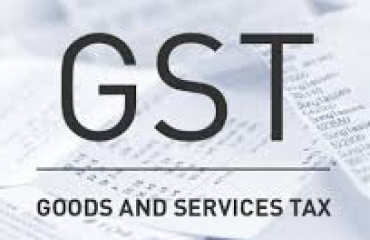
The Ministry of Finance has disclosed the monthly average gross Goods and Services Tax (GST) collection for the financial years 2021-22 and 2022-23, showcasing significant year-on-year growth. This article provides a detailed analysis of the GST collection data, along with insights into the government’s reforms to enhance GST compliance and increase tax collection.
The Ministry of Finance has disclosed the monthly average gross Goods and Services Tax (GST) collection for the financial years 2021-22 and 2022-23, showcasing significant year-on-year growth. This article provides a detailed analysis of the GST collection data, along with insights into the government's reforms to enhance GST compliance and increase tax collection.
Analysis: The data shows a remarkable growth in GST collection for the fiscal years 2021-22 and 2022-23, with a 30% and 22% increase, respectively, compared to the previous years. The rise in collections can be attributed to various factors, including economic recovery, policy changes, and improved compliance measures.
The Minister for State for Finance, Shri Pankaj Chudhary, highlighted that GST is paid on a self-assessment basis and mentioned the authorities' power to take action against cases of non-payment or short payment. The continuous process of detecting such cases and recovering unpaid taxes ensures a more robust tax administration.
Furthermore, the government has been implementing several reforms in GST based on the GST Council's recommendations. These reforms aim to enhance compliance and boost tax collection. Structural changes, such as adjusting GST rates to correct inverted duty structures and reducing exemptions, have been made to simplify the tax system.
Additionally, measures to improve tax compliance include mandating e-way bills, matching input tax credit (ITC), introducing e-invoices, deploying artificial intelligence and machine-based analytics, and using Aadhaar authentication for registration. Targeted actions against non-filers and risky taxpayers, along with the integration of e-way bills with fast tags, help curb tax evasion.
Conclusion: The Ministry of Finance's disclosure of the impressive growth in monthly average gross GST collection for the fiscal years 2021-22 and 2022-23 indicates a positive trend in tax revenues. The government's proactive approach to implementing reforms and promoting compliance has contributed to this encouraging outcome. As the GST system continues to evolve, it is expected that further improvements in collection and administration will be achieved, supporting India's economic growth and fiscal stability.
*****
Ministry of Finance
Monthly average gross GST collection for the FY 2021-22 & FY 2022-23 have shown 30% and 22% year-on-year growth respectively
The monthly average gross GST collection for the FYs 2021-22 & 2022-23 have shown 30% and 22% year on year growth respectively. This was stated by Union Minister for State for Finance Shri Pankaj Chudhary in a written reply to a question in Lok Sabha today.
The details of gross Goods and Services Tax collection on supply of goods and services (Domestic + Imports) for the FY 2020-21, 2021-22 & 2022-23 are as under:
(Rs. In crore)
The Minister further stated that GST is paid on self-assessment basis and tax administration at Central and State level is empowered to take action against cases where GST is not paid and short paid. Detection of such cases and recovery of taxes not paid or short paid is a continuous process.
Giving more details, the Minister stated that the Government, on the recommendations of the GST Council, has been bringing several reforms in GST. These measures would improve the GST compliance and increase the GST collection. These inter-alia include:-
i. Structural changes like calibration of GST rates for correcting inverted duty structure and pruning of exemptions;
ii. Measures for improving tax compliance such as mandating e-way bill, ITC matching, mandating e-invoice, deployment of artificial intelligence and machine-based analytics, aadhaar authentication for registration, calibrated action on non-filers, stop filers, targeted assessment-based action on risky tax payer, integration of e-way bill with fast tag etc.
iii. System based analytical tools and system generated red flag reports are being shared with Central as well as State Tax authorities to take action against tax evaders.
